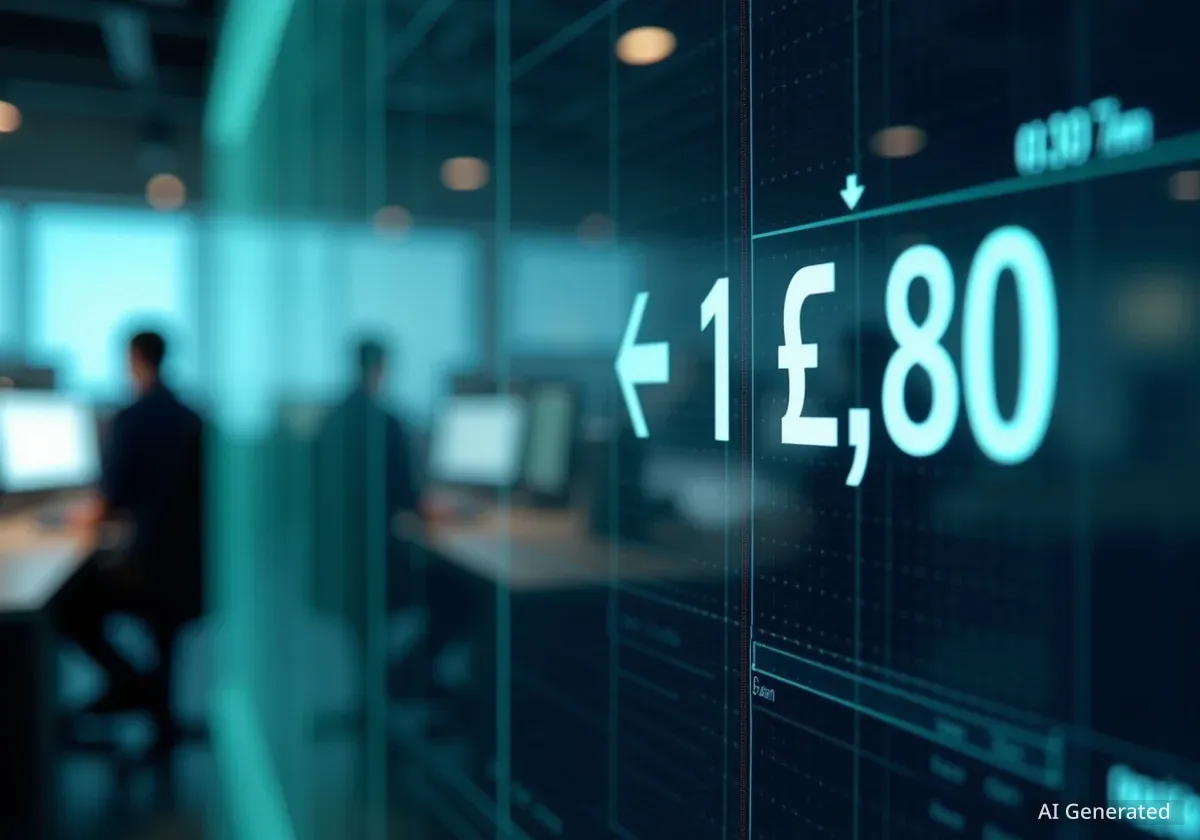The euro demonstrated notable strength at the close of a volatile week, climbing back above the $1.16 mark against the U.S. dollar. This recovery followed a dip to a more than two-month low of $1.154 just a day earlier. The currency's rebound was primarily driven by a weakening dollar, which faced downward pressure from escalating U.S.-China trade tensions and supportive political developments in Europe.
Key Takeaways
- The EUR/USD currency pair recovered to trade above the $1.16 level after hitting a two-month low of $1.154.
- The U.S. dollar weakened significantly following comments from the U.S. President signaling increased trade friction with China.
- Political stability in France provided a supportive backdrop for the euro, as the likelihood of snap elections diminished.
- Minutes from the European Central Bank's September meeting indicated confidence in the current monetary policy stance to handle economic shocks.
Dollar Weakness Fuels Euro Rebound
The primary catalyst for the euro's upward movement was a broad-based sell-off of the U.S. dollar. Investor sentiment toward the greenback soured after U.S. President Donald Trump indicated there was no immediate need for a scheduled meeting with Chinese President Xi Jinping. This statement was coupled with renewed threats to impose higher tariffs on Chinese imports, reigniting fears of a prolonged and damaging trade war between the world's two largest economies.
These comments introduced significant uncertainty into global markets, prompting investors to move away from the dollar. Heightened trade tensions often lead to market volatility, and in this instance, the direct statements from the U.S. administration specifically weighed on its own currency.
Currency Fluctuation
The euro's recovery was swift, moving from a low of $1.154 on Thursday to consolidating its position above $1.16 by the week's end. This represents a significant intraday and interday swing, highlighting the market's sensitivity to geopolitical news.
Analysts noted that the dollar's decline was a direct reaction to the perceived increase in geopolitical risk originating from U.S. trade policy. When the source of global economic uncertainty is the United States itself, the dollar's traditional safe-haven appeal can diminish, leading traders to seek alternatives.
European Political Landscape Offers Support
While dollar weakness was the main story, developments within the Eurozone also contributed to the euro's strength. Markets closely monitored the political situation in France, where President Emmanuel Macron was preparing to appoint a new prime minister following the resignation of Sébastien Lecornu.
Initially, a cabinet reshuffle can create uncertainty. However, investor concerns were eased by indications from Lecornu that dissolving the parliament and calling for snap elections was an improbable outcome. This signal of continuity and stability was welcomed by the market, removing a potential headwind for the euro.
Why Political Stability Matters
Political stability in core Eurozone countries like France and Germany is crucial for the health of the euro. The prospect of unexpected elections or government instability can undermine investor confidence, leading to capital outflows and a weaker common currency. The assurance that the current French government structure would likely remain intact provided a solid foundation for the euro's recovery.
The avoidance of a potential political crisis in one of the bloc's key economies helped solidify the euro's gains. It allowed traders to focus more on the macroeconomic picture and the dynamics of other currencies, such as the weakening dollar.
ECB's Steady Hand on Monetary Policy
Adding another layer of support for the euro, the European Central Bank (ECB) provided a sense of calm on the monetary policy front. Recently released accounts from the ECB's September meeting revealed a consensus among policymakers about the current state of interest rates.
The minutes showed that the governing council believed the prevailing interest rate levels were sufficiently robust to navigate potential economic shocks. This suggests that the central bank is not in a rush to alter its policy, projecting an image of stability and confidence in its strategy. This contrasts with periods of uncertainty where central banks might signal emergency measures.
The ECB's September meeting accounts showed that policymakers agreed current interest rates are sufficiently robust to address potential shocks amid two-sided inflation risks.
Furthermore, policymakers acknowledged that inflation risks were "two-sided." This means they see potential for inflation to either rise above or fall below their target. This balanced view indicates that the ECB is not overly concerned about deflationary pressures, a positive sign for economic health that further underpins the currency's value.
The ECB's steady-as-she-goes approach provided a stark contrast to the volatility being generated by U.S. trade policy. This policy predictability is often attractive to currency traders, especially during times of global uncertainty, making the euro a more appealing asset relative to the dollar.





